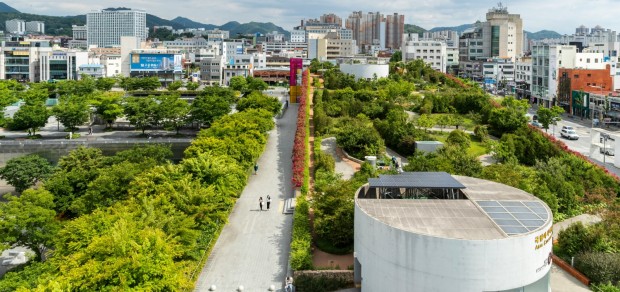Sustainable cities are becoming increasingly prevalent as a result of the growing eco-friendliness of building techniques brought about by technological advancements. In an effort to lessen their negative impact on the environment, these cities have adopted environmentally friendly technologies and innovative architectural styles.

(Photo : Unsplash/ASIA CULTURECENTER)
1. Copenhagen, Denmark
There are a number of environmental projects in place in Copenhagen, with the objective of reaching carbon neutrality by the year 2025. At the same time that additional roadways are being dedicated aside for cyclists, buses are making the switch from fuel to electric power. Given that only 29% of families own a car, people are becoming more habituated to riding bicycles rather than driving to get around.
Moreover, more than two-thirds of the city's hotels have both an eco-certification and the ability to rent bicycles. A hotel's environmental manager is responsible for ensuring that the hotel meets the most stringent sustainability standards in the industry.
2. Wellington, New Zealand
Wellington's smart city infrastructure has been designed in accordance with circular economy principles, which enable the reuse, remanufacture, and replacement of numerous components in a manner that promotes ongoing development. The city's pollution index is 13.66, which indicates that only 13.66 out of every 100 air particles are polluted. This region could be more in comparison to other regions, as evidenced by its population of only 213,000. Wellington's primary industries include horticulture, agriculture, fishing, and tourism, in contrast to countries that major manufacturers dominate.
3. Gothenburg, Sweden
In the realm of environmental policy, Gothenburg, Sweden, which is widely dispersed across an archipelago, is a significant player. One of its most ambitious initiatives, the Gothenburg Green City Zone, is designed to evaluate innovative, sustainable transportation and infrastructure with the objective of achieving a complete emission-free zone by 2030. Additionally, the shuttle that operates at the city's airport is powered by rapeseed oil, which is the highest Airport Carbon Accreditation. Only public transportation is available to reach the southern islands, which are virtually devoid of automobiles.
Also Read: Pros and Cons: Should You Consider Installing a Gravel Driveway?
4. Oslo, Norway
Despite the fact that it is a bustling city with a population of over 600,000 people, Oslo is located in the midst of beautiful natural areas such as forests and fjords, which it actively defends through the implementation of green laws. There are almost 5,000 charging stations for electric vehicles located across the city, and public buses are progressively being powered by electricity and biofuels. The city's hotel industry boasts an impressive 94% eco-certification, while the restaurant industry is committed to the eco-eating movement.
5. Vancouver, Canada
One of the cities that is frequently listed as being among the greenest on the planet is Copenhagen. As part of its CPH 2025 Climate Plan, the city established a goal in 2009 to by the year 2025, become the first carbon-neutral capital in the entire globe. In order to reduce energy consumption, Copenhagen has implemented a number of different strategies, such as the utilization of an energy-efficient district heating system that is connected to almost every household and the implementation of new cooling systems that save roughly 70% of the energy than conventional air conditioning.
6. Singapore
Singapore is frequently acknowledged as one of the most innovative green cities in Asia, with a population exceeding five million. A blueprint for sustainable development has been established by the city-state, which specifies sustainability goals for the period running up to the year 2030. These objectives encompass the following: ensuring that 80 percent of its buildings are certified green, increasing energy efficiency by 35 percent, and ensuring that 80 percent of residences are within a 10-minute walk of a train station. Additionally, Singapore has enhanced its sustainability by implementing significant reforms in the transportation sector.
Related Article: Eco-Friendly Solutions for Modern Building: 7 Benefits of Recycled Plastic







